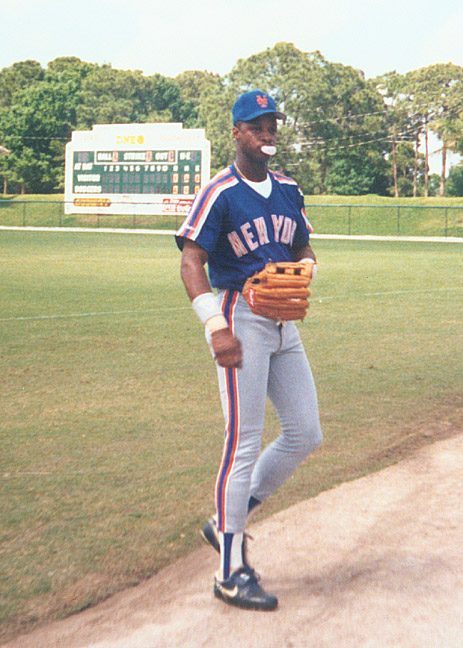RING MY BELL: The expensive pleasures of the ringtone.
by SASHA FRERE-JONES (New Yorker)
In 1997, your cell phone could make two kinds of sounds. It could “ring”-our anachronistic word for the electronic trill that phones produce when you receive a call-or it could play a single-line melody, like “Für Elise.” If you’ve ever heard a cell phone bleep out Beethoven without the harmony, you’ll understand that this wasn’t much of a choice. At about this time, Nokia, the Finnish cell-phone company, introduced “smart messaging,” a protocol that allowed people to send text messages to one another over their phones, and Vesa-Matti Paananen, a Finnish computer programmer, realized that it would work equally well for transmitting bits of songs. Paananen developed software called Harmonium that enabled people to program their cell phones to make musically complex sequences-melodies with rudimentary harmonic and rhythmic accompaniment-that they could forward to friends using smart messaging.
Those familiar with Linux, the freely available, open-source operating system developed by Linus Torvalds, another Finnish programmer, will not be shocked to learn that Paananen, in a nationally consistent fit of altruism, put Harmonium on the Internet for anyone to download, thus passing up a shot at becoming a billionaire. Companies called aggregators, which collect and distribute digital content, capitalized on Paananen’s innovation, using his software to create what is today known as the polyphonic ringtone: a small packet of code that plays the phone as if it were a music box, producing a synthesized approximation of a song that often sounds less like the original it emulates than a gremlin making merry inside a video game. Recently, the polyphonic ringtone acquired a competitor. Called a master tone, or true tone, it is a compressed snippet of actual recorded song, and emanates from the cell-phone handset as if from a tiny radio.
Ringtones of either variety cost about two dollars and are typically no more than twenty-five seconds long. Nevertheless, according to Consect, a marketing and consulting firm in Manhattan, ringtones generated four billion dollars in sales around the world in 2004. The United States accounted for only three hundred million of these dollars, although Consect predicts that the figure will double this year. Fabrice Grinda, the C.E.O. of Zingy, a company in New York that sells ringtones and cell-phone games, told me that in parts of Asia ringtones now outsell some types of CDs. “In 2004, the Korean ringtone market was three hundred and fifty million dollars, while the CD market for singles was just two hundred and fifty million,” Grinda said.
But America is catching up. Anyone who watches MTV has probably seen ads for a company called Jamster.com, which sells polyphonic ringtones as well as cruder, monophonic versions for older handsets. For a small fee (about six dollars a month), you can buy ringtones from Jamster by entering numerical codes on your phone’s keypad. This method is popular in Europe and is generally faster than the standard American approach: using your phone’s Web browser to scroll through pages of song titles. Most companies allow you to sample a tone before you buy it, but not all ringtones are compatible with all cell phones, so don’t get too excited if your favorite band is offering ringtones on its Web site. The song snippets may work only on that old phone you gave away to your nephew.
Consect reports that fifty-six per cent of the ringtones bought in the United States during the first half of 2004 were hip-hop, and Mark Freiser, Consect’s C.E.O., says that the vast majority of ringtone users are under the age of thirty. Teens like to assign different ringtones to different callers: something classical for Mom, an old hip-hop song for the roommate, a more recent track for the new boy in town. Since teens are fond of both hip-hop and cell phones, and have more friends than parents, it’s no wonder that hip-hop ringtones rule. Of course, what’s available to customers determines what they’ll buy. Marketers in the mobile-media industry call these purchases “preferences.” And they are right: ringtones, like the screen savers and plastic face plates that you can use to customize your phone, constitute a form of self-expression, though what you choose to tell the world about yourself is limited by a finite library of images and sounds.
A kid I met on the subway told me that his mother doesn’t like his new 50 Cent ringtone, “Candy Shop,” not because it features explicitly sexual rhymes but because it’s not as cool as “In Da Club,” a previous 50 Cent ringtone, which received Billboard’s first Ringtone of the Year award, in 2004. A karate teacher in his thirties told me that he spends ten dollars a month on ringtones, and currently has about twenty, most of them polyphonic renditions of Led Zeppelin songs. An architect in her mid-thirties said, “I spent three days of productive work time listening to polyphonic ringtone versions of speed metal, trying to find exactly the ringtone that expressed my personality with enough irony and enough coolness that I could live with it going off ten times a day. In a quiet room, in a meeting, this phone’s gonna go off-what are they going to hear?”
The ringtone also teaches us how songs work. Which clip best exemplifies a song? Did the ringtone’s maker select the right bit? Do you even need to hear the singing? Perhaps the part of the song that arouses our lizard brain is the instrumental opening. It may be stranger and more sublime to hear a polyphonic impression of George Michael’s voice than to listen to the real thing one more time. If a song can survive being transposed from live instruments to a cell-phone microchip, it must have musically hardy DNA. Many recent hip-hop songs make terrific ringtones because they already sound like ringtones. The polyphonic and master-tone versions of “Goodies,” by Ciara, for example, are nearly identical. Ringtones, it turns out, are inherently pop: musical expression distilled to one urgent, representative hook. As ringtones become part of our environment, they could push pop music toward new levels of concision, repetition, and catchiness. I spent more than a year sampling polyphonics, but felt stymied by the master tone, which has been trumpeted as superior because it is taken from the original recording. The first master tones I downloaded on my cell phone sounded terrible, like a transistor radio turned up to ten and stuffed inside a sock. I missed my primitive polyphonic tootles. When I finally upgraded to a newer phone, the master tones suddenly made sense. The sock was off and the radio was hi-fi. I felt the way I imagine someone who had a color TV in 1954 must have felt. I was hearing actual music, and I chose Kelis’s “Milkshake” as my ringtone, guessing that the song might not be audible above the clangor of the streets but knowing that the alliance would be brief and that I’d soon be switching.
In the United States, master tones can be played only on phones available for the last year and a half, yet they already account for nearly fifty per cent of ringtone sales. Musical genres that suffered as polyphonics-sonically thick guitar rock, country, and jazz-can now challenge the hip-hop hegemony. Record labels, convinced that they have lost millions of dollars in CD sales to MP3 file-swapping, have been especially attentive to ringtones, and they love master tones. Polyphonic ringtones are essentially cover versions of songs: aggregators must pay royalties to the publisher, who then pays the songwriter. But master tones are compressed versions of original recordings, which means that record labels-the entities that typically own recordings-are entitled to collect a fee, too.
That fee can be considerable: record labels get twenty-five per cent of every master-tone sale (though they must pass along a portion of their take to the performer and the publisher). “It’s an unbelievable mess,” Les Watkins, the vice-president of Music Reports, Inc., a music-licensing and accounting firm, said. “A lot of these aggregator companies were very early players, essentially beholden to the major record labels and the music publishers to get the rights they needed. And, in this country, the music business is a very mature and consolidated business-somewhat collusive, in fact. The aggregators accepted rates and terms that they really didn’t have to accept, and agreed to license the music in such a way that they’re overpaying by a tremendous multiple.”
This arrangement is unlikely to last. There are now Web-based companies, like Xingtone, for example, that will convert songs from your collection into master tones. Or you can do it yourself: some new cell-phone models can be connected to a computer by a data cable, allowing you to create master tones from MP3 files at home. However it is done, transferring music that you own to your phone is legal under copyright law.
Technically adept fans may thrill at the prospect of being able to make master tones for free. But the demise of the polyphonic will be a minor, and poignant, loss for music. The advent of film sound gave us the infinite blessing of composers like Ennio Morricone and Bernard Herrmann, but it took away the perfect trinity of the oncoming train, the imperilled heroine, and the trembling upper register of an upright piano. Next time you hear your favorite song playing in full verisimilitude from someone’s pants, give a moment’s thought to the lowly, twinkling polyphonic. Transitional stages of technology often have their own imperfect charms, memorable in ways that no one could have predicted. Polyphonic-ringtone nostalgia is approximately six months away.
LIVES
My Ghetto Days
By RICHARD KAYE (NY Times)
I was 7 years old, a scrawny white kid, and I was standing in front of some 30 second graders, all of them black. One after the other, the boys and girls in the sun-drenched Miami classroom giddily peppered me with questions. What is it like to live in the ''nice'' part of town? How many swimming pools do you have? Are all of your brothers and sisters white, too? (The girl who asked this last question was roundly hooted by her classmates.) I tried to answer the rapid queries, but I became shy. As the only white person in the room, I felt painfully under scrutiny and downright weird. I might as well have been a snowman. When I began to stutter, the friendly lady teacher told me I could sit down.
What was I doing there? It was 1967, and it was show and tell -- more accurately, I was the show and tell. Along with a huge sunflower one girl brought to class and a firetruck that a boy had hooked up to a toy giraffe, I was the day's novelty item. The children of my family's housekeeper, Gladys, had taken me to school. Gladys was a lanky Bahamian, an ex-model and single mother who was a weekly presence in our house.
My parents, liberal emigres from New York, moved to Florida in the 40's. Like many other Easterners, my father and mother found in Miami an improbable setting for their progressive social ideals and entrepreneurial plans for self-advancement. ''I went to sleep in the winter darkness,'' Edmund Wilson wrote in a 1949 essay about his first train ride to this southern Florida city, ''and wake up to a dazzle of golden light on green palms and low-growing pines that drip with Florida moss.'' My parents must have felt something similar.
Although they were hardly wealthy (my father ran a small drug-and-cosmetics business), they decided that I was becoming impossibly spoiled. Too many handsome Swedish toys and swank bar mitzvahs were making me soft, they claimed, so off they sent me to Gladys's family in a poor section of Miami, the first time for a couple of weeks, later for sporadic weekends. In the 60's, it was very much a city with a racial divide. Public schools were segregated. Blacks lived in ghettos like Overtown, and well-off whites inhabited areas with mellifluous names like Coral Gables.
Gladys's two sons were friends of mine and had come to my house many times. But these sleepovers were different -- a strange reversal that raised eyebrows among some of my parents' friends. Although it never occurred to me at the time, I was a sort of civil rights social project for my parents. By today's standards, my parents were naive reformers, comic idealists, and their decision to send me into a ghetto was of a piece with their wacky idea of letting me attend a local production of ''Hair.'' (''What was the nude scene like?'' all my friends wanted to know.)
For me, staying with Gladys's family meant days of sheer pleasure. Gladys may have been a wonderfully efficient housekeeper in white South Miami, but her own house was, to a 7-year-old, fabulously messy, noisy and chaotic. Friends and relatives dropped by at all hours. There seemed to be no observance of bedtime curfew. And Gladys's two sons treated me like a wonderful treasure, an exotic animal they had taken in. They took me to other peoples' homes and showed me off to their friends. Sure, I was a pawn in their continuing show-and-tell game, but their guided tours introduced me to a marvelous counterworld.
My sojourn in Gladys's neighborhood was undoubtedly the first time I thought about myself self-consciously as white -- as inhabiting white skin -- the sort of self-consciousness that most blacks feel every day and that many white people don't. No particular social mechanism requires it today; nothing insists on it. For years I used to perplex my politically-minded friends when I argued on behalf of national service -- on the principle that there was something beneficial in whites and blacks, privileged and not, living together for periods of time.
Gladys's kids came to stay with me, too. If I loved the cheerful clutter of their house, they liked the relatively prosperous fun of my family's swimming pool (just one). But my sleepovers came to a sudden end after a year of visits. A riot broke out in one of Miami's poor neighborhoods during the 1968 Republican National Convention. I recall my mother, crying into the phone as she explained to Gladys (who had telephoned to set up a visit to her house), saying, ''But your people don't want us in your neighborhood.'' My mother tried to explain to me why I couldn't go to Gladys's for a while, why everything had become impossible. Then she sat down at the kitchen table and cried some more. It was all a little confusing for me, but it definitely felt like the end of something, a fragile, unlikely experiment in biracial friendship across neighborhood lines.

TALK CINEMA
Saint Ralph (Canada)
from www.mrqe.com
Saint Ralph is one of those kid-overcoming-obstacles kind of movie that I love. It's not syrupy; it's not preposterous; it's not corny. Instead, it's sweet, funny, smart and touching. The story, set in 1950s Hamilton, Ontario, follows 14-year-old Ralph Walker (Adam Butcher) in his bid to enter and win the Boston marathon. See, Ralph's father is dead and his critically ill mother (the aforementioned Gyllenhaal doppelganger MacDonald) has slipped into a coma. The doctors say it will take a miracle for her to ever regain consciousness, so Catholic-school student Ralph decides that him winning the Boston marathon will be the miracle to do the trick.
Helping him in his admittedly ambitious dream is Father Hibbert (the always wonderful Campbell Scott), who enjoys bucking the system by doing things like teaching Nietzsche in religion class and who was once an Olympic marathon runner himself. He takes on the job of coaching the scrawny Ralph (who, by the way, gets his motivation from a Santa suit-clad God) and tries to hide their training from the school's headmaster, the stern and humorless Father Fitzpatrick (Gordon Pinsent). "Fitz," as the students call him, thinks Ralph should abandon the miracle idea in favor of buckling down at school, and he forbids Ralph from even thinking about Boston. Also on hand is Ralph's mother's nurse (Jennifer Tilly), a sexy, savvy woman who not only offers emotional support, but teaches Ralph the right way to bench press.
Aside from the terrific performances from all involved, Saint Ralph possesses a distinct charm and a winning heart. Its characters are engaging, its story poignantly entertaining and its ending nicely subtle. It avoids clichés and doesn't hammer any kind of Important Message into the skulls of its audience. It reminded me a lot of Steven Soderbergh's Kind of the Hill (one of my fave films) in its tone and its central notion of a teenage boy who faces adversity in the name of family. It's a "little movie," but one that deserves a big round of applause.
READING
Currently reading: The Believer, New Yorker, Slate, Churchill, and The Writer's Almanac.


















